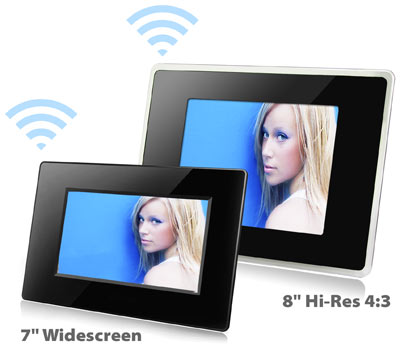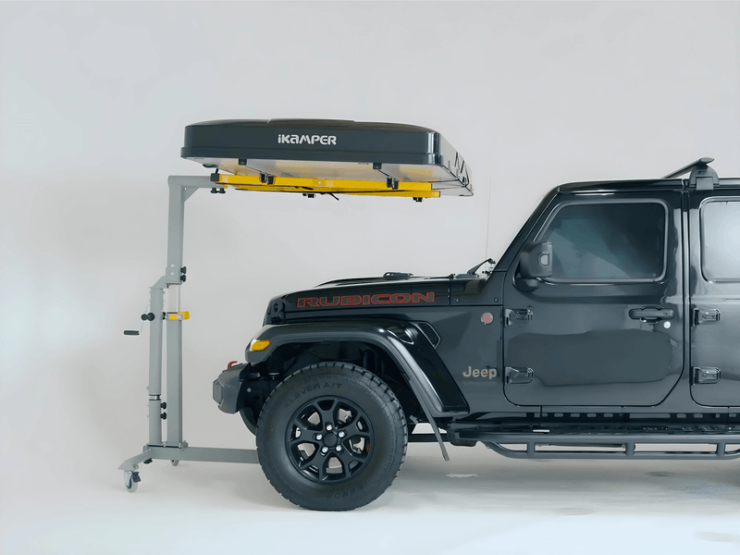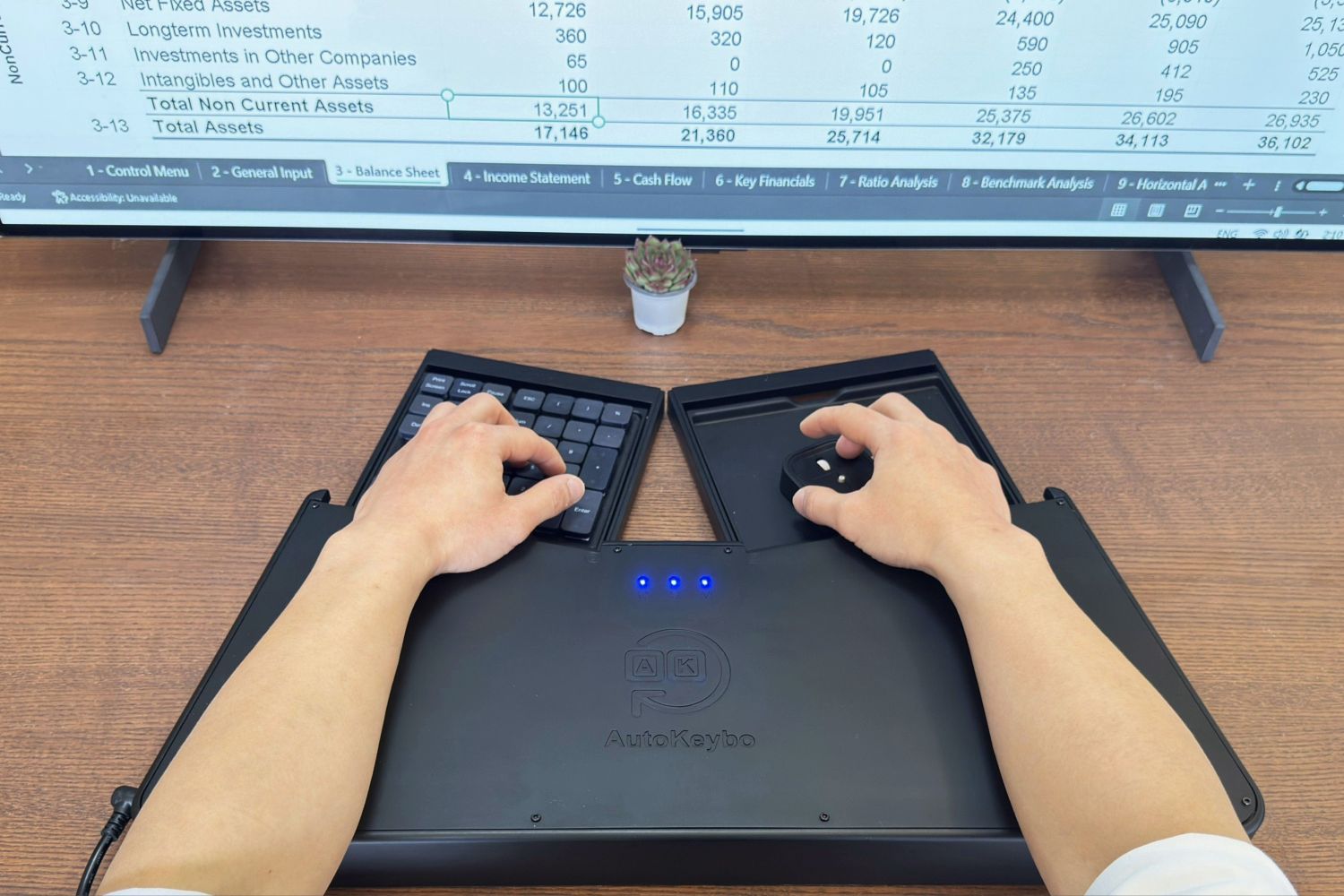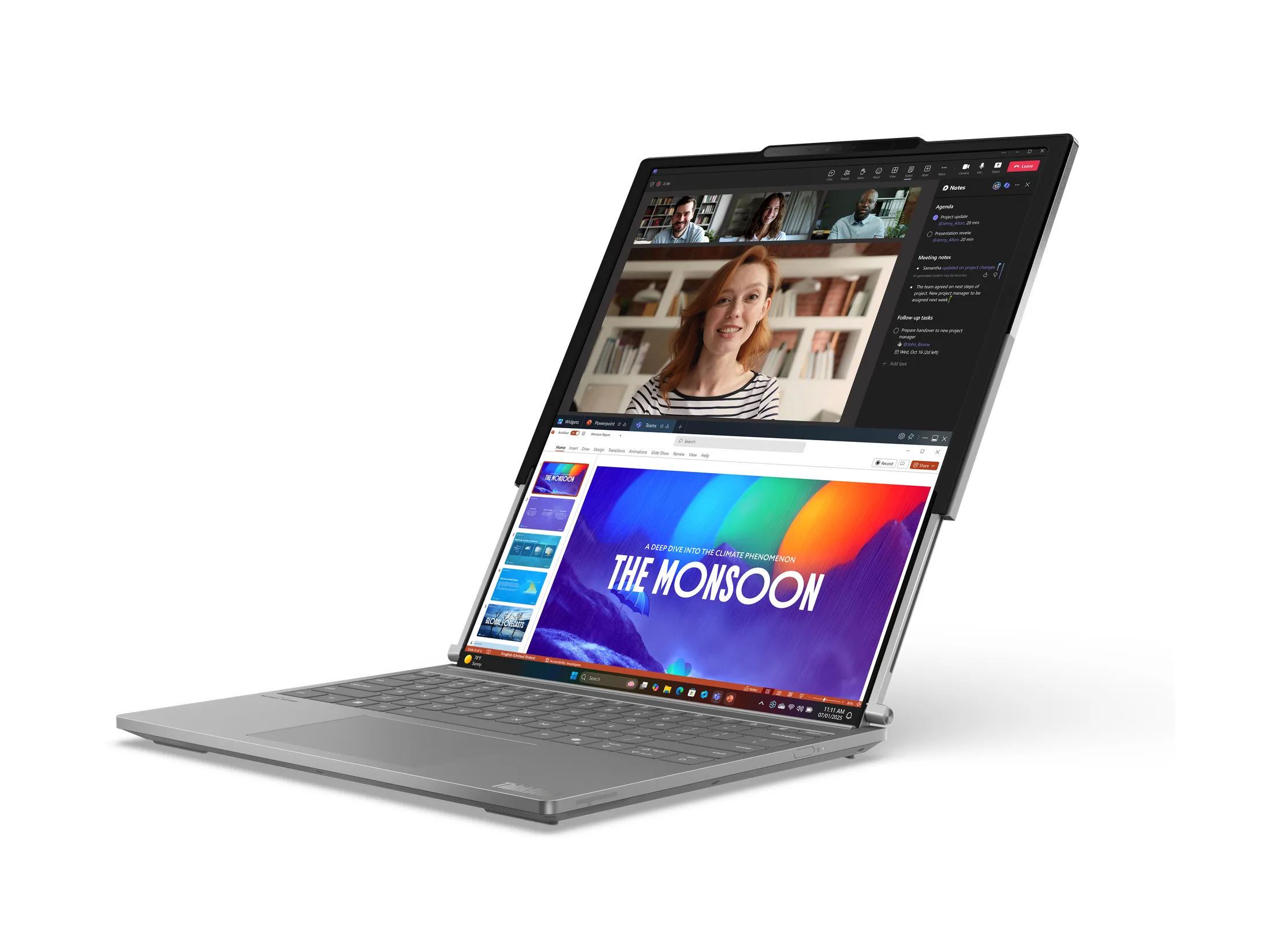
By Evan Ackerman
I am starting to seriously hate eStarling. It used to be that I only disliked them for the initially crappy, and then finally slightly less crappy version of their brilliant (brilliant if it would only work) WiFi digital picture frame. To bring you up to date, the concept of the eStarling frame is that you can send pictures to it from anywhere via a built-in WiFi connection and an online interface that checks email accounts and RSS feeds for pictures. Version one of the frame was butt ugly, couldn’t connect to any wireless networks over 10 inches away, froze all the time, and had a terrible, terrible screen. ThinkGeek nicely replaced all version one frames with version two frames, which are less ugly, can connect to wireless networks (sometimes), and have a terrible, terrible screen. I reviewed this frame back in May in a two part review, of which the second part never got written, since the frame wouldn’t play nice with my unsecured wireless network no matter what I tried.
Regardless of the software problems that the eStarling has, the most glaring flaw is the hardware. Have I mentioned that the 7 inch, 16:9 (!), 480×270 (!!) widescreen is not only a terrible proportion, but it’s also terrible quality? I can’t stress the terrible enough. Seriously, for the premium you pay ($220), it’s fantastically terrible. And now that eStarling has apparently gotten enough schmucks like me to buy their crappy versions, they’ve released something that looks to have a quality display: an honest-to-goodness, 4:3 800×600 WiFi frame.
More ranting, and specs on the new frame and latest software, after the jump.
To be fair, my version of the frame (the 16:9 version) includes online software to automatically crop or resize pictures that you send to the frame. But also to be fair, I take a little bit of pride in my pictures, and resizing them to 16:9 ruins their composition, at least to the extent that it’s not possible for me to allow a piece of software just haphazardly shrink them. No, I feel obligated to open each picture I send to the frame in Photoshop first, and manually recompose it. This, to put it mildly, is a huge pain in the ass. There is really no good reason to use a 16:9 format for pictures, but the concept of the eStarling frame is so cool that people like me were suckered into it anyway, and now eStarling is punishing us by coming out with a frame that is actually capable of displaying the pictures we take in full. Here is what else it can do:
* Photobucket Integration: Millions of users who have stored their photos with Photobucket can send photos directly from their Photobucket accounts to eStarling.
* Immediate Direct Photo Emailing to Frame: Each frame has its own unique email address so that photos can be received from computers or mobile phones. A built-in email filter protects against unwanted photos. No setup is required for senders to send photos to the frame.
* Group Frames: Users can set up a single email address that corresponds to multiple frames so that photos can be easily shared and displayed on those frames.
* RSS Support: The eStarling frame supports all major RSS photo feeds now including Flickr, Picasa, Photobucket, AOL, Smugmug, iPhoto, Gallery, etc. (More coming soon.)
* Email-to-Frame / Web-to-Frame Messaging: Short messages can be sent directly to eStarling frames from user’s Seeframe Live account and allowed email accounts and cell phones.
* Community Photo RSS: The eStarling frame supports all major RSS photo feeds, including Flickr, Picasa, Photobucket, AOL, Smugmug, iPhoto, Gallery, and more. Users can recommend and share their favorite RSS photo feed among the eStarling community.
* Smart Photo Play List: Users can choose photos to be displayed on an eStarling frame on specified dates, such as displaying selected photos on a user’s birthday or anniversary.
* Email Photos from Frame: A one-touch button allows users to send photos directly from their frames to a Web account and the email accounts of their family and friends.
* Text Messaging to Frame: Short messages can be sent directly to eStarling frames from a user’s Seeframe Live account, or from authorized email accounts and cell phones.
* Dual Use Mode: If no Wi-Fi connection is available, the eStarling frame can operate as a stand-alone digital photo frame.
* Auto Power Saving: The eStarling frame can be programmed to turn-off automatically at night in order to save power and protect the screen.
It really really irks me that I have to keep coming back to this simple fact: the concept of the eStarling is great, and if you can deal with the temperamental software, I would definitely recommend getting one of these frames now that the size and quality no longer suck. The good, 4:3 version is available in white or black for $259 with free shipping direct from eStarling. Now, if they would only man up, admit that their first few versions were lousy, and institute some sort of trade-in program, I could start respecting them again.










